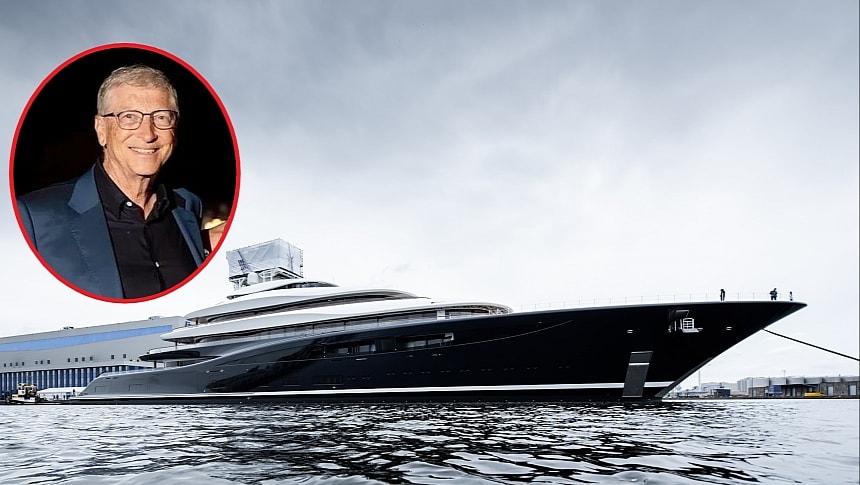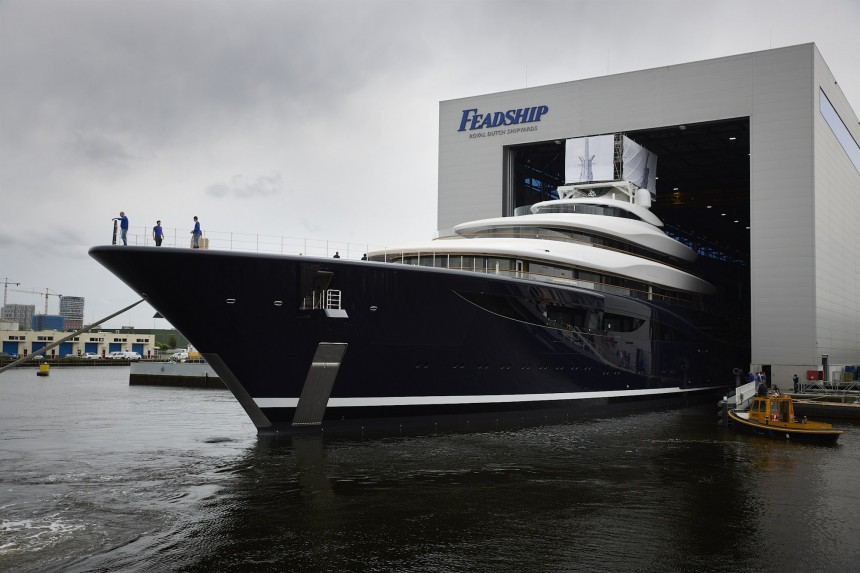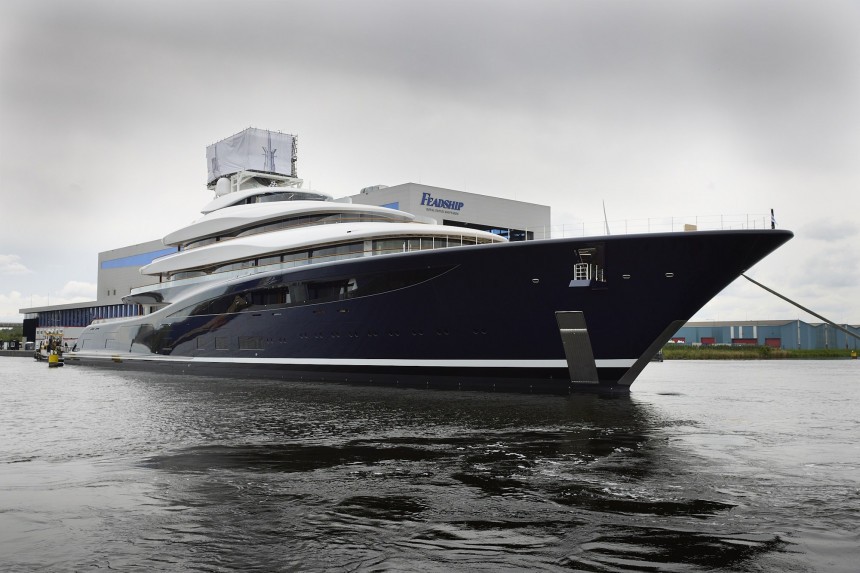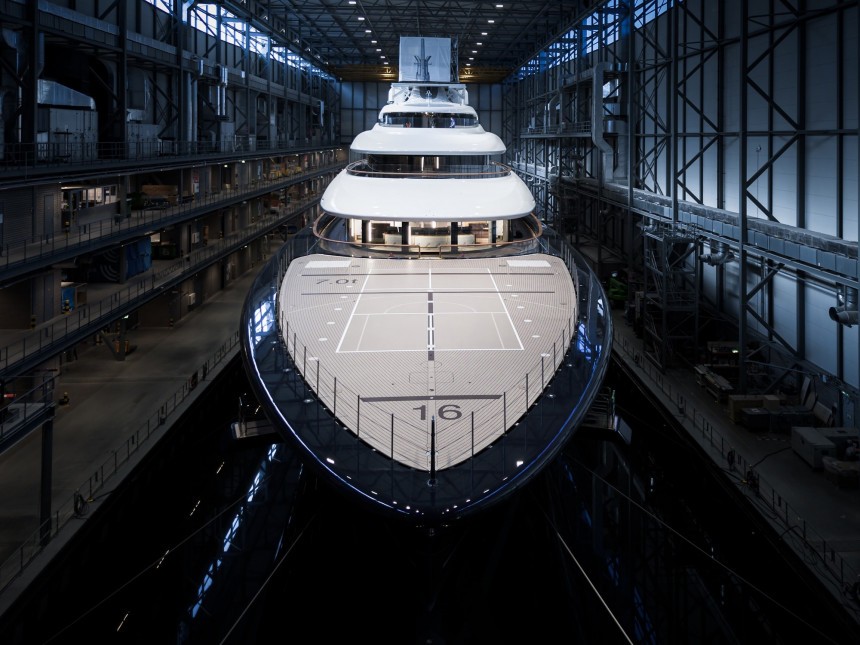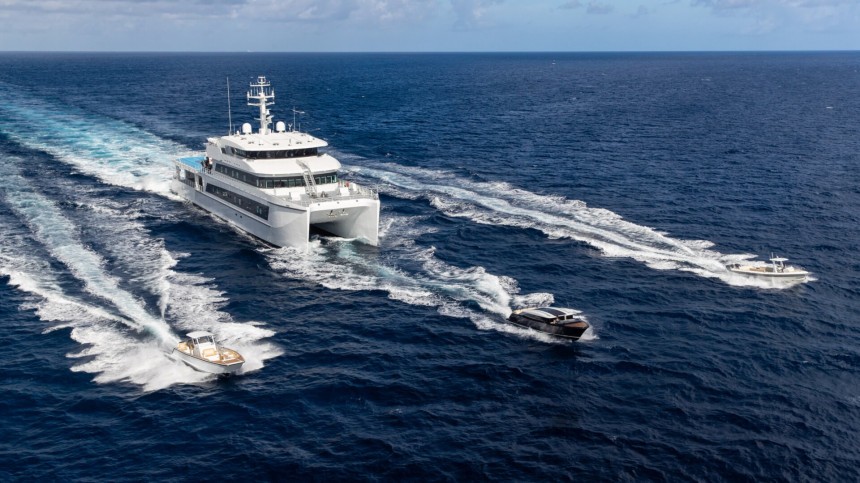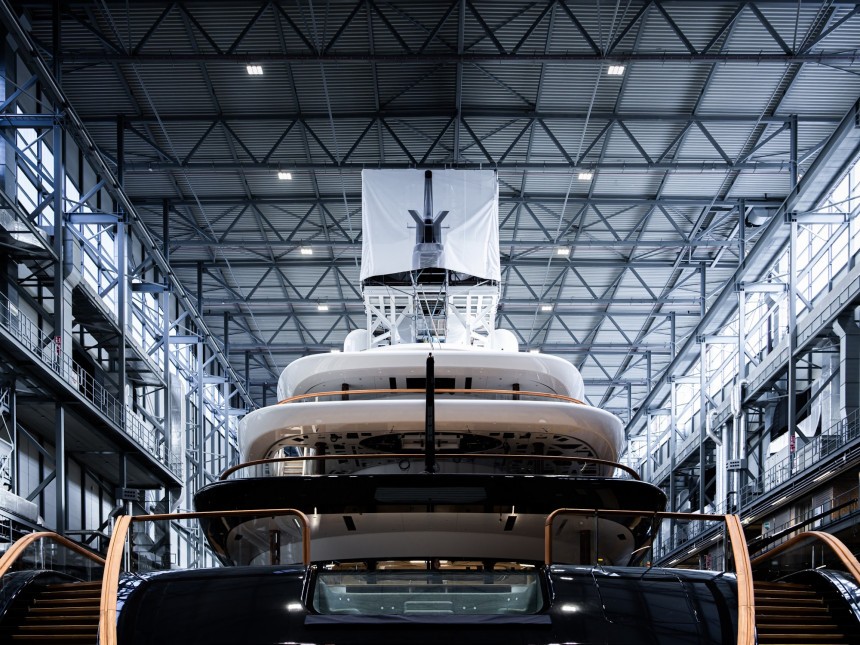To be or not to be (a megayacht owner), that is the real question. Prince Hamlet might have been tormented about life's hardships and the right approach to them, but the biggest question of the day is a $600+ million one: why did the billionaire change his mind about owning a megayacht?
Back in 2019, word got out online that Bill Gates, the billionaire co-founder of Microsoft and one of the world's most high-profile activists, had bought himself a hydrogen-powered megayacht called Aqua, which came with an estimated price tag of $600 million. This kind of money is an insane amount today as much as it was back then, but the most shocking bit about the rumor was the fact that the purchase was not in line with Gates' image as an environmentalist.
Some months later, Sinot Yacht & Architecture Design, which had created the Aqua concept as a showcase for the 2019 Monaco Yacht Show, put out a statement to deny the acquisition. Aqua was not a yacht to sell, but a concept looking into more sustainable propulsion for privately owned vessels.
Fast-forward to last month, and the old rumor received new legs: it turns out that Bill Gates had, after all, acquired a hydrogen-powered megayacht, and he'd already decided to sell it. The vessel, referred internally to as Project 821, would be delivered later this year but was launched out of the Feadship drydock on May 4, 2024.
The initial report claimed that the megayacht came with an impressive asking of €600 million (approximately $646.2 million at the current exchange rate). Separately, Gates was also selling his much smaller shadow superyacht, the Wayfinder shadowcat he'd bought in 2021 for a more modest $25 million.
So why would he be ridding himself of both, with so little time to go to the delivery of the mothership – especially one that's so special in every way?
Project 821 can't perform entire crossings on hydrogen, but it can cruise at 10 knots (11.5 mph/18.5 kph) or run hotel functions at anchor for a full week on hydrogen. For longer travels, it relies on ABB pod drives powered by generators that run on hydro-treated vegetable oil (HVO), so its carbon footprint is reduced considerably.
Feadship has pledged to make the transition to emissions-free yachting by 2030, and this megayacht is a good indicator of the radical, all-or-nothing approach to it. Everything from the way aluminum for the superstructure was produced to the heat recovery system and the sensor-packed smart AC systems is part of the mission to reduce the impact of this vessel on the environment it explores.
Not that luxury amenities lack. The size of the megayacht is partly explained by the need to build a special room for the cryogenic storage tanks for hydrogen, partly to allow room for incredible features. These range from private libraries to a proper hospital, packed tender garages, private and exclusive spaces, pools, helipad, wellness and gym, and accommodation for as many as 30 guests and 44 crew.
Not to put too fine a point on it, but Project 82 is unlike any other megayacht out there, almost in every aspect you can think of: propulsion and tech, sustainability, size, and amenities. If that $600+ million asking price is accurate, it's also among the world's most expensive.
One way to offset this constant drain on the budget is to offer the vessel for charter in your off-season because chartering covers maintenance. On the downside, chartering means letting strangers onboard your floating home, and that's something that Bill Gates would probably not do. Until last month, Wayfinder, the shadowcat to Project 821, was never offered for charter, so we assume it only came out on the charter market because he'd already decided to sell it.
Owning a $646 million megayacht, even if it's the world's most sustainable, still means at least 10% in annual costs, so some $64 million. Gates is a billionaire still, but he's also pledged his entire fortune to charity, so there will come a day when paying this kind of money just to own a megayacht will be unwise.
By comparison, Project 821 is the greenest alternative of the billionaire lot, if you don't take into account the fact that it would be constantly trailed by Wayfinder. In the past, Gates has shown incredible resilience to criticism about his carbon footprint, especially about his many flights by private jet. The chances that he'd somehow realized owning a megayacht like Project 821 didn't exactly mix with his activism are slim.
At the same time, though, owning no megayacht at all is a much greener alternative to owning a hydrogen-powered one. Compounded on his pledge to give away his money and the kind of negativity his ownership would have attracted, hydrogen propulsion or not, it could very well be that Gates understood he was better off without one.
That's just guessing, though. It's probably not wise to hope Bill Gates himself will explain why he decided to sell his megayacht before he even got to set foot on it, along with its shadow vessel.
Some months later, Sinot Yacht & Architecture Design, which had created the Aqua concept as a showcase for the 2019 Monaco Yacht Show, put out a statement to deny the acquisition. Aqua was not a yacht to sell, but a concept looking into more sustainable propulsion for privately owned vessels.
Fast-forward to last month, and the old rumor received new legs: it turns out that Bill Gates had, after all, acquired a hydrogen-powered megayacht, and he'd already decided to sell it. The vessel, referred internally to as Project 821, would be delivered later this year but was launched out of the Feadship drydock on May 4, 2024.
So why would he be ridding himself of both, with so little time to go to the delivery of the mothership – especially one that's so special in every way?
Project 821, a trendsetter in terms of sustainability and luxury
The launch of Project 821 is by no means a regular one, if you can call that the launch of a gigantic 390-foot (119-meter) private vessel with every amenity imaginable – and some you probably haven't even imagined – onboard. This is also the world's first hydrogen-powered megayacht capable of operating extensively on sustainable, emissions-free hydrogen fuel-cell energy, and which puts an unprecedented focus on sustainable construction in almost every aspect of the build.Feadship has pledged to make the transition to emissions-free yachting by 2030, and this megayacht is a good indicator of the radical, all-or-nothing approach to it. Everything from the way aluminum for the superstructure was produced to the heat recovery system and the sensor-packed smart AC systems is part of the mission to reduce the impact of this vessel on the environment it explores.
Not that luxury amenities lack. The size of the megayacht is partly explained by the need to build a special room for the cryogenic storage tanks for hydrogen, partly to allow room for incredible features. These range from private libraries to a proper hospital, packed tender garages, private and exclusive spaces, pools, helipad, wellness and gym, and accommodation for as many as 30 guests and 44 crew.
Upkeep is too expensive
The golden rule of superyacht ownership is that you must be prepared to pay at least 10% of the superyacht's initial value per year in maintenance, fees, and assorted costs. That amount goes out of the bank account yearly, without exception, even if the vessel never leaves the marina.One way to offset this constant drain on the budget is to offer the vessel for charter in your off-season because chartering covers maintenance. On the downside, chartering means letting strangers onboard your floating home, and that's something that Bill Gates would probably not do. Until last month, Wayfinder, the shadowcat to Project 821, was never offered for charter, so we assume it only came out on the charter market because he'd already decided to sell it.
More focus on sustainability
A megayacht like Rising Sun, owned by billionaire David Geffen, emits 800 times the carbon dioxide gases more than the average American in a year. Even Jeff Bezo's Koru, which is a sail-assisted yacht, comes with an impressive carbon footprint because it's mostly operated by twin MTU diesel engines.By comparison, Project 821 is the greenest alternative of the billionaire lot, if you don't take into account the fact that it would be constantly trailed by Wayfinder. In the past, Gates has shown incredible resilience to criticism about his carbon footprint, especially about his many flights by private jet. The chances that he'd somehow realized owning a megayacht like Project 821 didn't exactly mix with his activism are slim.
That's just guessing, though. It's probably not wise to hope Bill Gates himself will explain why he decided to sell his megayacht before he even got to set foot on it, along with its shadow vessel.
